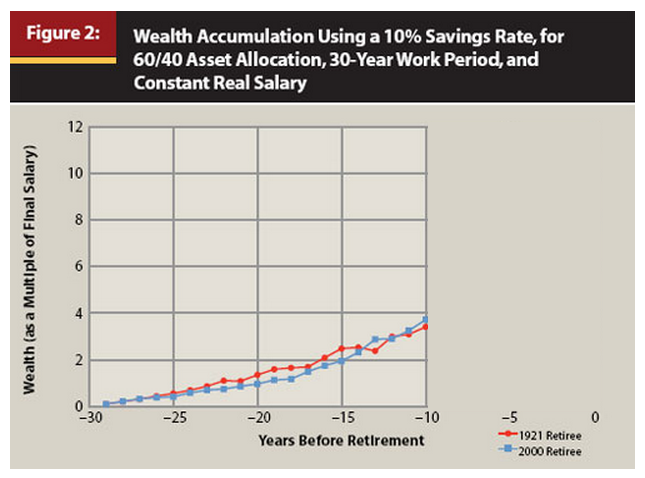Most Americans begin their careers at roughly age 25. It’s
difficult for most young people to save much for retirement when they first
start out, so for retirement planning purposes we typically assume that you
will begin saving seriously around age 30.
Most Americans retire somewhere around age 65. About a
fourth of us will live into our nineties. Most of us will not, but when you’re
planning for retirement you need to assume you will live to about age 95 or
even 100.
If you die sooner, retirement will be shorter and less
expensive of course, but counting on dying before you run out of money is not
much of a plan. Growing very old and very broke is what economists might call an
“undesirable outcome”, so we plan for the worst financial case. It’s far better
to plan for a long retirement and to leave unused savings to your heirs than to
plan for an average length retirement and die broke.
This means that we will work for roughly 35 years and be
retired for as long as 35 years, and that means that we have to earn enough in the
first 35 years to not only pay for our living expenses then, but also to sock
away enough savings to pay for the last 35
years.
That may sound like everyone needs to work for 35 years to pay for 70 years of living expenses, but it isn’t quite that bad (you
only need to save about 15% to 20% of your paycheck,
which is still daunting), because we have three things to help us, Social
Security, personal retirement savings and a reduced cost of our standard of
living.
During our careers, we pay (and complain about) FICA taxes of
a little over 7% of our paychecks. About 6% of that amount is to fund Social
Security and the rest funds Medicare. In a way, FICA taxes are forced
retirement savings, because in return for paying them we are eligible for Social Security
retirement benefits when we reach age 62, realize that we would be broke without Social Security, and decide that paying FICA taxes wasn't such a bad deal, after all.
Social Security replaces part of our pre-retirement work
income. It replaces a larger part for lower-earners than for higher-earners, as
you can see from the following table from Aon
Consulting (click for a PDF of the report). The second column estimates how much of your pre-retirement income that Social Security will replace.
The second factor that protects us from having to earn two incomes before retirement is personal retirement savings. We can save money in taxable accounts, 401(k) accounts and IRA’s with deductions from our paychecks while we are working. Our savings are increased in two ways.
First, the IRS gives us tax incentives to save in
tax-deferred accounts like 401(k)
plans and IRA’s, so the government boosts our retirement savings with tax
dollars (to a maximum of 6% of income). Second, the money we save earns
interest that compounds and increases our retirement savings if our investment in these plans grows
adequately.
(That’s a big "if".)
The third reason we don’t have to save an entire second
income as we work is that we can buy the same standard of living after we
retire for less money. We no longer pay FICA taxes on our income and we no
longer have to save for retirement, for example.
Assume you earned $60,000 a year before retiring and look at
the fifth row of the table below. (I'll repeat it to save you scrolling.)
A typical household with your income would need to replace 78% of that $60,000 ($46,800) to maintain their standard of living, according to Aon Consulting’s study. Social Security might replace about 46% of that $60,000 ($27,600). The rest (32% of $60,000, or $19,200 per year) would need to come from personal retirement savings.
A typical household with your income would need to replace 78% of that $60,000 ($46,800) to maintain their standard of living, according to Aon Consulting’s study. Social Security might replace about 46% of that $60,000 ($27,600). The rest (32% of $60,000, or $19,200 per year) would need to come from personal retirement savings.
These are percentages of pre-retirement income. Looked at as
a percentage of their new post-retirement income of $48,800, Social Security
might provide about 59% of your retirement income and 41% would need to come
from savings.
Social Security is the most secure component of retirement
income. More than half of American workers have no personal retirement savings,
at all, and they will be forced to lower
their standard of living after they retire.
There you have it in a nutshell. You work 35 years and pay
FICA taxes and save for retirement. Then you retire for up to 35 more years and
live primarily off Social Security benefits and your retirement savings.
It isn’t a great system. I’ll explain why in my next post.







